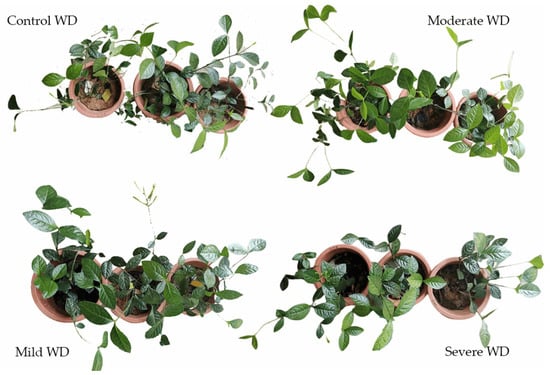Chloranthus spicatus (Thunb.) Makino, a perennial evergreen vine subshrub plant, belongs to the family Chloranthaceae and the genus Chloranthus, also known as Chloranthus. Traditionally, the plants have been termed pearl orchids, fish roe orchids, and chicken claw orchids because of the resemblance of their flowers with pearls and fish eggs and of their inflorescence with chicken feet [1]. Cloranthus species are mainly grown in Anhui, Zhejiang, Jiangsu, Fujian, and Sichuan provinces. These species are commonly distributed on mountain slopes, gullies, and thick forests at altitudes of 150–990 m [2]. The plants are well-known for their floral fragrance that endures longer, leading to the flowers being ranked equivalent to White orchid and Jasmine flowers, which together constitute “Three Flowers of Shexian County” [3]. Chloranthus flowers and leaves impart characteristic scents to tea in China [4]. Chloranthus plants are delicate and grow preferentially in moist regions, but are sensitive to flooding, prefer shade and are sensitive to direct sunlight, and exhibit high sensitivity to cold and torrid conditions [5]. Therefore, the plants’ growth region is extremely limited. Presently, the plants are known to be distributed in Nanyuankou Village, located in Shexian County, Huangshan City, Anhui Province. The plants in the region have been mainly artificially cultivated [1].
Moisture is one of the key survival factors for plant growth. Southern mountainous regions of Anhui Province are characterized by a subtropical monsoon and humid climate zone, which involves four distinct seasons, mild and rainy in spring, with both heat and rain occurring in summer, cool and dry in autumn, and cold and moisture in winter [6]. These climatic factors result in droughts and floods during the summer and autumn, respectively. Typically, plants adapt to the environment through self-regulation under drought or floods; however, extreme conditions inhibit plant growth and even cause the death of plants [7]. A study reported the inhibitory effect of water deficit (WD) on the growth, carbon metabolism, and yield of cowpeas (Vigna unguiculata (L). Walp.) [8]. A soil moisture deficit was reported to cause a decrease in the stomatal conductance (Gs) of lime (Citrus latifolia Tan.), with the Gs values (non-irrigated) under open-field conditions 35% lower than that under shaded conditions [9]. The yield and size of the fruits were also observed to be the maximum under shaded conditions. Water shortage significantly increased the photosynthesis and transpiration in the seedlings of Rhinanthus alectorolophus, although survival, biomass, and gas exchange were altogether decreased [10]. Studies investigating plant response to WD stress have focused mainly on growth and physiology, such as photosynthesis on the leaves [11], osmolyte content [12], enzymatic activity [13], and accumulated biomass [8,14]. High water efficiency in seedlings could improve the quality and yield [15]. However, fewer studies have examined water regulation efficiency in Chloranthus. To address this gap, the present study examined water regulation in 1-year-old potted C. spicatus seedlings by monitoring growth, photosynthesis, and physiological indicators under different soil moisture contents. This study evaluated C. spicatus seedlings’ tolerance to WD, providing a reference for the plantation and management of Chloranthus species in the southern mountains of Anhui Province.
Source link
Yangjuan Shang www.mdpi.com

